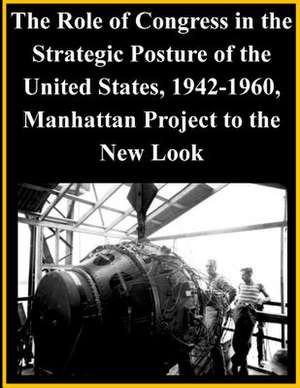The Role of Congress in the Strategic Posture of the United States, 1942-1960, Manhattan Project to the New Look
Autor United States Defense Threat Reduction a.en Limba Engleză Paperback
Preț: 97.31 lei
Nou
Puncte Express: 146
Preț estimativ în valută:
18.62€ • 19.50$ • 15.44£
18.62€ • 19.50$ • 15.44£
Carte disponibilă
Livrare economică 19 martie-02 aprilie
Preluare comenzi: 021 569.72.76
Specificații
ISBN-13: 9781501058202
ISBN-10: 1501058207
Pagini: 72
Dimensiuni: 216 x 279 x 4 mm
Greutate: 0.19 kg
Editura: CREATESPACE
ISBN-10: 1501058207
Pagini: 72
Dimensiuni: 216 x 279 x 4 mm
Greutate: 0.19 kg
Editura: CREATESPACE
